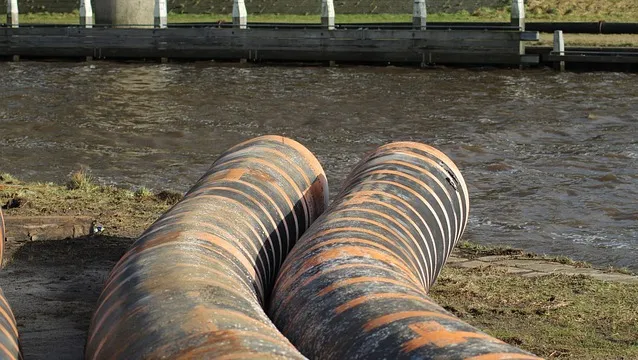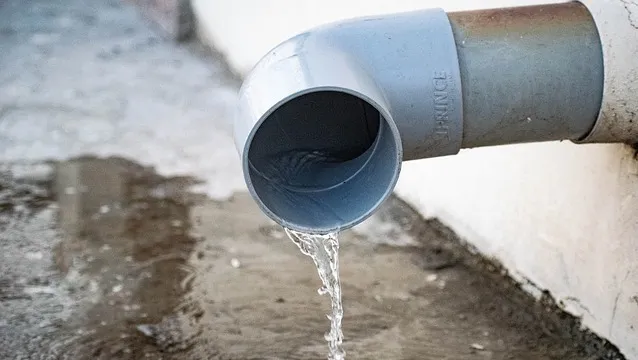While significant progress has been made in environmental protection, the water industry still faces critical issues. This article delves into three pressing challenges and outlines future directions for development.
As the environmental protection sector evolves, significant strides have been made in areas like urban sewage treatment and atmospheric management. However, key challenges persist. This article explores three major pain points in the water industry, shedding light on current hurdles and future directions.
Inadequate Pipeline Network Infrastructure
Sewage treatment in our country encounters various challenges, including persistent issues with black and odorous water bodies despite significant investment in treatment. Additionally, low sewage collection rates, insufficient carbon sources in incoming water, and inefficient sewage plant operations contribute to the problem.
Key issues with the current drainage pipe network include historical design limitations that fail to cope with contemporary rainfall intensity. This results in urban waterlogging and overflow pollution. Furthermore, mixed and incorrect connections in rainwater and sewage diversion systems contribute to the problem. Mixed connections within municipalities, residential areas, businesses, and street-side shops lead to rainwater entering sewage systems or sewage entering rainwater systems, further aggravating urban waterlogging and disrupting the carbon balance in incoming water.
Addressing Low Pipe Network Coverage and Construction Quality
One pressing issue in China is the low coverage rate of drainage pipe networks. Major cities have achieved a 60% coverage rate, while smaller cities range between 40% and 60%. This discrepancy results in a notable gap between sewage collection and treatment rates. Despite a commendable urban sewage treatment rate of 98.1%, the centralized collection rate of domestic sewage remains below 70%. The national sewage pipe network missing rate stands at approximately 50%, particularly due to the lack of household collection pipes.
Furthermore, the construction quality of our country's pipeline network is a concern, compounded by inadequate system management and operation. Defects, collapses, and ruptures occur frequently, rendering parts of the network incapable of fulfilling their intended functions. This highlights a crucial need for comprehensive improvements in construction standards and network management practices to ensure efficient and reliable sewage collection and treatment nationwide.

In March of this year, the Ministry of Housing and Urban-Rural Development and the Ministry of Ecology and Environment, along with three other departments, issued a directive aimed at strengthening the construction, operation, and maintenance of urban domestic sewage pipe networks. By 2027, the directive targets the elimination of direct domestic sewage discharge outlets and blank facilities in urban built-up areas, with a goal of achieving a centralized collection rate of over 73% for urban domestic sewage. The notice also emphasizes the urgent need to accelerate sewage pipe network transformations, marking the start of an accelerated phase in network construction.
Meanwhile, challenges persist in the water supply pipeline network, characterized by hardware and software issues such as aging infrastructure, running, bubbling, dripping, and leaks, as well as extensive management concerns. The aging water supply pipe network, coupled with poor construction quality and the use of substandard pipes by developers, contributes to frequent pipe bursts. Such incidents not only waste water resources but also pose risks like road collapses, impacting the social economy and jeopardizing public safety. Addressing these issues is critical to ensuring efficient water supply infrastructure and safeguarding community well-being.
Currently, the water supply pipeline network in China experiences an average leakage rate of 15%, resulting in a nationwide annual leakage volume of 8.3 billion cubic meters. In response to this challenge, the Ministry of Housing and Urban-Rural Development and the National Development and Reform Commission jointly issued a directive in 2022 titled "Notice on Strengthening Leakage Control in Public Water Supply Networks," setting a target to reduce the leakage rate of urban public water supply networks to within 9% by 2025. Given the severe water shortage in our country, minimizing leakage in water supply pipelines has become a critical priority.
Moreover, the presence of aging water supply facilities and inadequate management contributes to the failure of reservoirs and water tanks to meet disinfection standards, resulting in bacterial growth and water contamination from foreign objects. To address these issues and ensure water supply safety, comprehensive measures such as pipeline network transformations, zone metering, pressure regulation, and intelligent development are necessary. Leveraging technologies like big data and artificial intelligence enables the prompt detection of new leakage points and the tracking and location of missing points, significantly enhancing operational efficiency and reducing complexities in the water industry's pursuit of smart water solutions.
Wilo (China) Water Pump System Co., Ltd. specializes in innovative water pump solutions. Their Wilo-Atmos GIGA-N horizontal end-suction centrifugal pump ensures efficient performance.
Shanghai Guanlong Valve Energy Saving Equipment Co., Ltd. offers advanced flow and pressure regulating valves designed for optimal energy conservation.
Mei De Group Co., Ltd. specializes in stainless steel double clamping pipe fittings, ensuring durability and reliability in plumbing systems.
Hangzhou Meiyi Automation Technology Co., Ltd. provides electromagnetic flowmeters like the LDG-SUP-A100, offering precise measurement capabilities for various applications.
Tianjin Zhiyi Times Technology Development Co., Ltd. introduces floating water quality monitoring vessels, enhancing environmental monitoring efficiency and accuracy.
The increasing volume of sewage production poses a significant challenge for sludge disposal. With over 60 billion tons of urban sewage treated annually in China, the resulting sludge exceeds 60 million tons, mainly managed through landfilling, incineration, and reuse. However, landfilling, comprising 48% of disposal methods, is the most prevalent, despite its associated environmental risks like groundwater pollution and land resource depletion. Recent policies advocate for more sustainable approaches, aiming to prioritize sludge treatment alongside water management, emphasizing harmless disposal and resource utilization to reduce reliance on landfills during the "14th Five-Year Plan" period.

The challenges of sludge treatment and disposal in China revolve around three key issues:
Firstly, inadequate investment and infrastructure have led to a shortage of treatment facilities, leaving much sludge untreated and chemically unmanaged due to historical focus on water-related initiatives.
Secondly, poor sludge quality, characterized by low organic content and high sand content, complicates treatment due to high energy demands and challenges in the existing pipe network system.
Lastly, the dominant landfill method for disposal is unsustainable, given the need for harmless treatment before using sludge for construction purposes or incineration. However, China's sludge, with its high moisture content and low calorific value, faces significant challenges and costs associated with incineration. Additionally, sludge contains both valuable resources and pollutants, making it a complex issue that requires careful resolution.
Currently in China, there are four primary technical pathways for the safe and resourceful utilization of sludge: anaerobic digestion followed by land application, drying and incineration with ash disposal or utilization in construction materials, aerobic fermentation for land application, and deep dewatering leading to sanitary landfill. Despite ongoing challenges in sludge resource utilization, policy directives emphasize sustainable development through resource utilization pathways.
Jingjin Equipment Co., Ltd. showcases its filter press series.
Jiangsu Kangtai Environmental Protection Co., Ltd. presents its integrated sludge deep dewatering system.
CODEL Air Technology (Beijing) Co., Ltd. offers an ultra-low temperature breeze sludge drying solution.
Jiangsu Leading Drying Technology Co., Ltd. features granulators and paddle dryers.
Jiangsu Boyi Environmental Protection Technology Co., Ltd. highlights a sludge low-temperature belt dryer.
There are significant contradictions in water resource supply and demand, making sewage resource utilization crucial. China faces both water pollution and scarcity issues. Utilizing sewage addresses both problems simultaneously. Unlike traditional water sources, sewage can be used locally, reducing costs and pollution. The government has introduced policies supporting sewage resource utilization.
In 2021, ten departments issued "Guiding Opinions on Promoting Wastewater Resource Utilization," a landmark document. It outlines key areas and projects for sewage resource promotion, aiming to establish a systematic, safe, environmentally friendly, and economical sewage resource utilization pattern by 2035. This strategy focuses on creating a sustainable water supply source, marking a strategic move to address water scarcity. The document also emphasizes implementing regional reclaimed water recycling projects, purifying urban sewage to replenish local water sources after meeting quality standards.

Once sufficient water is sourced, it undergoes natural circulation and purification for local use in production and daily life, effectively utilizing sewage. Sewage plants are evolving from traditional terminal treatment to dual functions of pollution control and water supply. In water-scarce regions, recycled water supply entities and users can negotiate pricing independently, transforming "sewage" into a valuable "commodity resource."
Regional water recycling offers two key advantages. First, it resolves conflicts over using recycled water for ecological vs. domestic purposes. Water is initially stored in the ecological environment, then used as a new water source for production and daily life. Second, by replenishing ecological water with recycled water and reusing it, the need for extensive recycled water transmission and distribution pipelines is reduced. This approach leverages natural water body mobility to enhance economic efficiency.
Shanghai Weisaibo Environmental Protection Technology Co., Ltd.
Beijing Sino Membrane Technology Co., Ltd.
Grundfos Pump (Shanghai) Co., Ltd.
Recycled water must meet Class III or IV water standards, and even stricter criteria for domestic or production use. Achieving these high-quality standards requires advanced sewage treatment, which involves physical, chemical, and biological methods. Physical methods include adsorption and ultraviolet disinfection, chemical methods involve ozone oxidation and pharmaceutical treatments, while the biological method, especially membrane bioreactors, offers precise pollutant separation, making it ideal for water recycling.
The development and reuse of municipal and industrial wastewater provide a fundamental solution to China's water supply-demand imbalance. Reclaimed water is locally accessible with guaranteed quality and stable supply, serving ecological replenishment, municipal, agricultural, and industrial needs. It's now considered the "second water source for cities" and the primary source for industry.
In the realm of water management, addressing water scarcity and pollution are paramount challenges for China. To combat water scarcity, we must prioritize source conservation and tap into unconventional water sources. Meanwhile, tackling water pollution requires strategic planning, integrated plant, network, and river management, and robust systemic governance.


